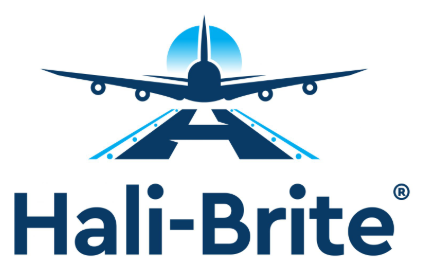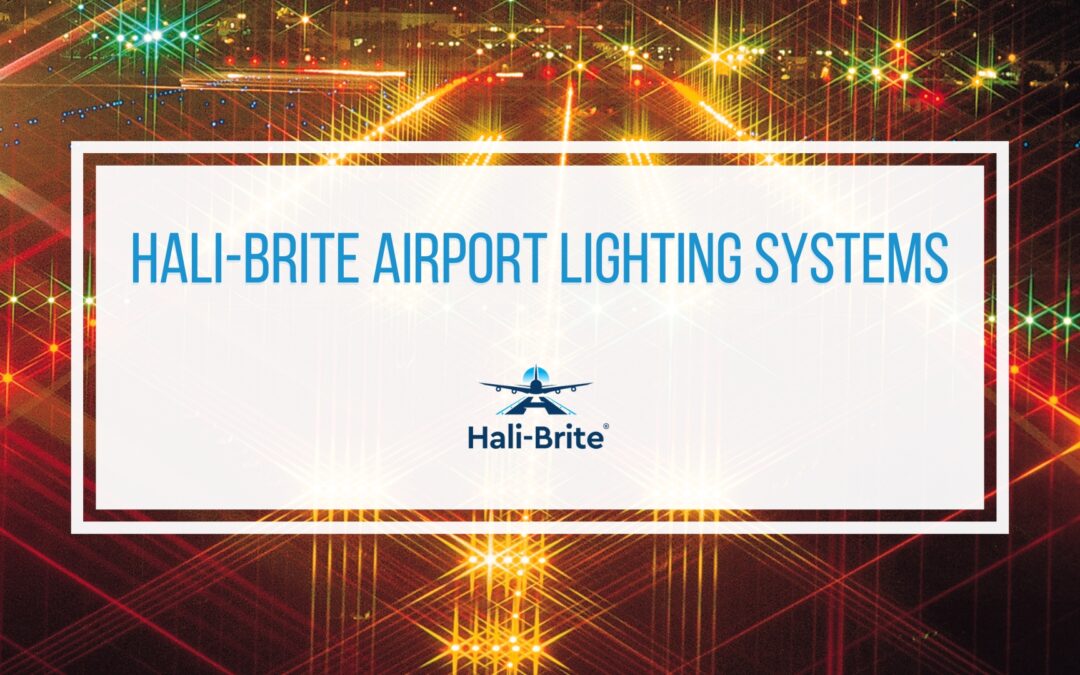Airport lighting systems have come a long way since the earliest days of aviation. In the early 20th century, airstrips relied on improvised methods to guide pilots during nighttime operations. These initial efforts laid the groundwork for the sophisticated airport lighting solutions today. Over the decades, new materials and technological breakthroughs have made lighting safer, more reliable, and far more efficient.
- Rotating Beacons: Guiding Pilots Through the Night
- Beacon Towers: Standing Tall for Safety
- Wind Cones: Real-Time Wind Awareness
- Runway Lighting: The Foundation of Safe Takeoffs and Landings
- Obstruction Lighting: Signaling Hazards and Obstacles
- Segmented Circles: Navigational Organization for Pilots
- Runway Closure Marker: Clarifying Active and Inactive Zones
- Solar Power Supply: Lighting the Future Sustainably
- Trail Lighting: Beyond the Runway
- Heliport Lighting: Precision for Rotorcraft Operations
- Vertiport Lighting: Pioneering the Next Generation of Air Travel
- Lighting the Path Forward: Why Hali-Brite Leads the Way
Modern technology allows for automated systems, LED illumination, remote monitoring, and even solar power solutions, ensuring safe takeoffs, landings, and ground operations in almost any weather or visibility condition. When flying, pilots trust these lights to guide them from touchdown to taxi and beyond. That trust is built on continuous innovation by companies dedicated to airfield safety.
With a solid commitment to creating innovative products, Hali-Brite has established itself as a leading force in improving runway safety for airports of all sizes and even emerging vertiports for the next wave of air travel. We are committed to making our lighting solutions even more efficient and reliable. Let’s explore how our airport lighting systems fit together to keep airports safe and organized.
Rotating Beacons: Guiding Pilots Through the Night
Rotating beacons are among the most recognizable equipment in any airport, serving as a guiding light for aircraft when visibility is low. Airport beacons help pilots quickly identify the location of an airfield in poor weather or during nighttime operations. Our Airport LED Rotating Beacon L-801A(L) is FAA ETL Certified and AIP Qualified, ensuring it meets or exceeds strict industry standards. It offers up to 65% power reduction over traditional metal halide lamps. With an instant-on feature, there’s no more waiting for bulbs to warm up. The beacon uses one white LED lamp and one aviation green LED lamp while maintaining a typical lamp life of 50,000 hours. Its patented belt-drive system eliminates the need for regular lubrication, reducing maintenance and extending the reliability of the airport beacon.
Beacon Towers: Standing Tall for Safety
Larger airfields often require beacon assemblies mounted on tall structures to ensure visibility across vast distances. Hali-Brite offers two tower solutions to meet different operational needs: the Beacon Tipdown Pole and the Beacon Basket Pole. Our Beacon Tipdown Pole, available in heights ranging from 25 to 55 feet, can be easily raised or lowered by one person using an internal hand-operated winch. For airports needing a more robust structure, our Beacon Basket Pole comes with a round beacon service basket and galvanized service steps spaced out for safe and convenient access. Both options are designed to meet or exceed FAA specifications, making them essential for larger operations that need their beacons installed high and maintained easily.
Wind Cones: Real-Time Wind Awareness
Knowing the wind speed and direction can help pilots decide which runway to use and when it’s safe to operate. Our Wind Cone Light Kits L-806 and L-807 provide reliable, easily visible indicators of wind conditions. These wind direction indicators are available for Size 1 (18″) and Size 2 (36″) wind cones and can be powered by 120 VAC, 12 VDC, or 6.6 amp series circuits. Equipped with long-life LED lamps and multiple independent lamp circuits for redundancy, our wind cones require virtually no maintenance and consume only a fraction of the power used by typical halogen systems. Moreover, Hali-Brite offers solar-powered options, eliminating the need for conventional power sources and minimizing operational costs.
Runway Lighting: The Foundation of Safe Takeoffs and Landings
Runway lights are the backbone of an airfield, helping pilots see the runway edges, taxiways, and approach paths. Our L-860 Low Intensity Elevated Runway Light (LIEL) is a cost-effective solution ideal for smaller airfields or as supplemental lighting at larger airports. It can serve as both a runway edge light and a taxiway light, featuring an incandescent low-wattage lamp that conveniently melts snow and ice buildup. Available in various color configurations, including clear, blue, red/clear, and green/red, these airport lighting systems guide pilots through different zones of the airfield, ensuring pilots stay on the correct path during critical phases of flight.
Obstruction Lighting: Signaling Hazards and Obstacles
Airports often have tall structures, such as towers, antennas, or elevated signage, that can pose a risk to aircraft. Proper obstruction lighting reduces these risks by making obstacles visible from great distances and multiple angles. Our Obstruction Light L-810 from Hali-Brite offers 360-degree visibility through its red glass Fresnel lens. With single and dual models available and an expected lamp life of 100,000 hours, these lights are both reliable and efficient. Their compact, low-power design means airports can keep energy costs down while ensuring that pilots are alerted to any potential hazards around the airfield.
Segmented Circles: Navigational Organization for Pilots
Segmented circles serve as visual aids for pilots, indicating airport traffic patterns and runway headings, especially at smaller airfields or those without Air Traffic Control (ATC). Our FAA-compliant HB-5340 Segmented Circle can help pilots easily visualize the traffic flow. It offers pre-assembled panels for straightforward installation, requiring only eight bolts to set up. Its collapsible panels simplify shipping, and these durable, aluminum powder-coated segments, available in 8′, 10′, or 12′ sizes, are built for long-lasting performance in various weather conditions.
Runway Closure Marker: Clarifying Active and Inactive Zones
When a runway or taxiway is temporarily out of service, clear and well-lit closure markers are necessary to prevent accidents or confusion. Our LED Portable Lighted Runway Closure Marker RCM-D L-893 is designed for easy deployment by a single person in under five minutes, with no tools needed. The unit uses 50,000-hour built-in LED lamps, and a reliable diesel engine powers it for over 140 hours between refuels. It is wind tested up to 95 mph, ensuring stability under challenging conditions. Furthermore, the marker is highway towable, making it easy to transport and set up wherever it’s needed.
Solar Power Supply: Lighting the Future Sustainably
As airports look for ways to reduce carbon footprints and operational costs, solar-powered solutions have become increasingly popular. Our Solar Power Supply (SPS) offers zero energy cost operation, eliminating the need for expensive trenching, wiring, and utility bills. Featuring 10-day nominal battery autonomy, long-life premium AGM solar batteries, and a custom-designed setup based on local climate data, these systems perform reliably even in extreme temperature ranges. The marine treat option is available for corrosive environments, ensuring a robust, long-lasting installation. It’s a significant leap forward for airports aiming to embrace renewable energy sources without compromising reliability.
Trail Lighting: Beyond the Runway
Airfields often need lighting solutions that extend beyond the runway to include perimeter paths, service roads, and emergency routes. Our Trail-12-CL Trail Light is a UL-listed fixture using an efficient 5W LED perfect for long-distance electrical runs. Designed to be Dark Sky friendly, it projects light laterally rather than upward, minimizing skyglow and light pollution. The durable aviation glass and tamper-proof screws of the trail light ensure reliability in demanding environments. With base can mounting for easy installation, it’s a versatile option for both aviation and non-aeronautical pathways.
Heliport Lighting: Precision for Rotorcraft Operations
Heliport lighting demands tight precision due to the unique landing and takeoff patterns of rotorcraft, especially in emergency medical services and commercial operations. Our Heli-Port LED Rotating Beacon L-801(H)L is FAA ETL Certified and achieves 80% power reduction over traditional lamps. It provides instant-on capability and significantly reduces light wash into surrounding neighborhoods. The typical lamp life of 50,000 hours ensures minimal downtime, and a patented belt-drive system cuts lubrication needs. Pair it with our L-860 Low Intensity Elevated Runway (LIEL) Heliport Light, which uses a low-wattage incandescent lamp that aids in melting snow and ice. Together, these products guarantee that rotorcraft pilots have the precise guidance needed in all conditions.
Vertiport Lighting: Pioneering the Next Generation of Air Travel
As the aviation industry evolves toward Advanced Air Mobility (AAM), featuring electric Vertical Takeoff and Landing (VTOL) aircraft, vertiports are quickly becoming a reality. Our Vertiport LED Beacon L-801(H)L brings cutting-edge features to these new facilities, such as instant-on performance, low light pollution, and a patented belt-drive system that eliminates messy gear lubrication. With a typical 50,000-hour lamp life and multiple mounting options, the beacon is suited for rooftops or dedicated beacon towers. It operates efficiently at 116W under standard conditions, making it a practical, sustainable choice for next-generation air travel hubs.
Lighting the Path Forward: Why Hali-Brite Leads the Way
The aviation landscape is constantly shifting, with emerging technologies and designs aimed at reducing carbon footprints, enhancing safety, and expanding travel options. From conventional airports to heliports and the newly envisioned vertiports, Hali-Brite remains at the forefront of innovation. Our range of products demonstrates a deep commitment to meeting evolving industry needs.
As more prototypes for eVTOL aircraft emerge, our focus on quality, efficiency, and forward-thinking design ensures our lighting solutions continue to set the standard for runway and airfield safety. If you want to learn more about how our innovative lighting systems can enhance the safety and efficiency of your airport, heliport, or vertiport, contact us at (218) 454-095 or here.


